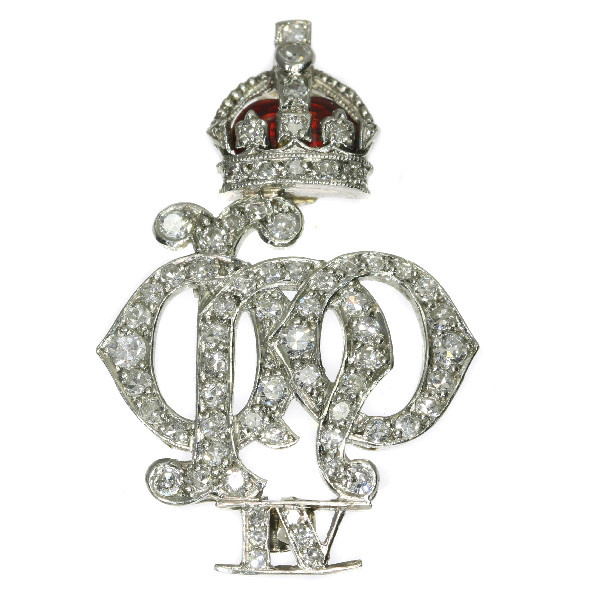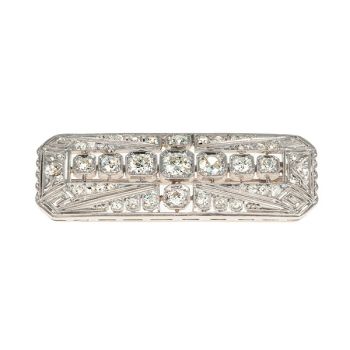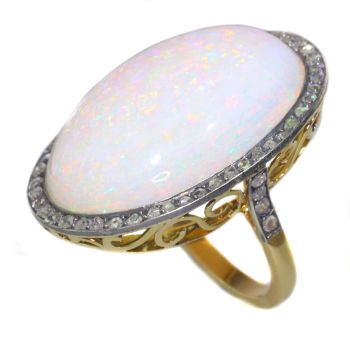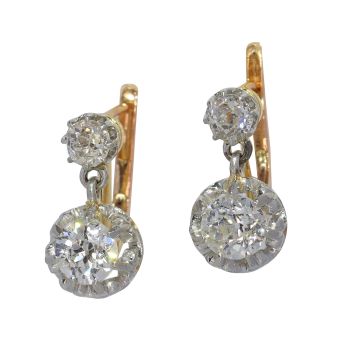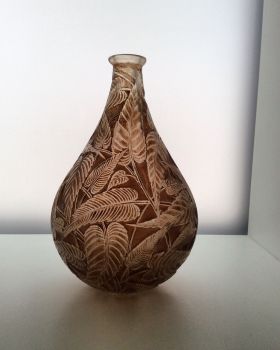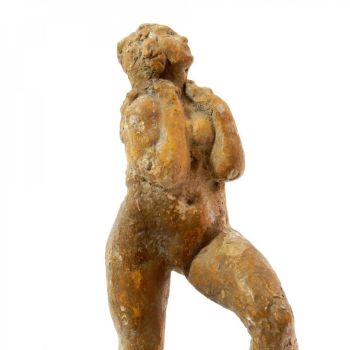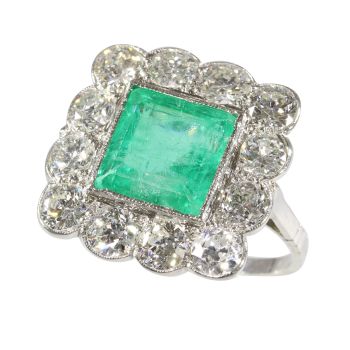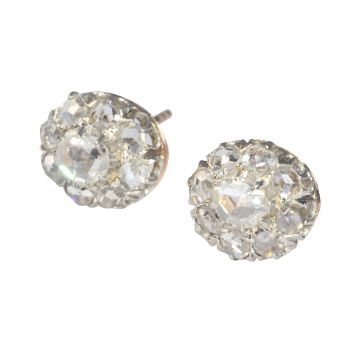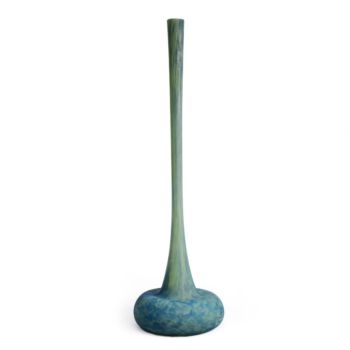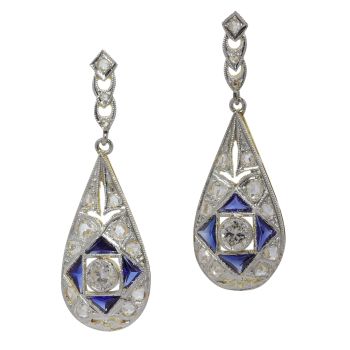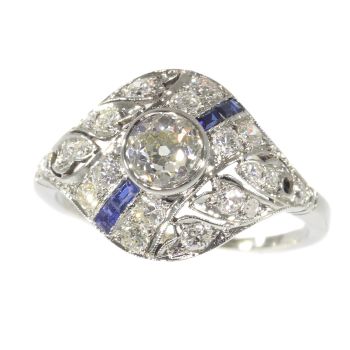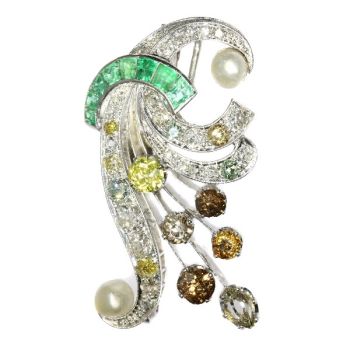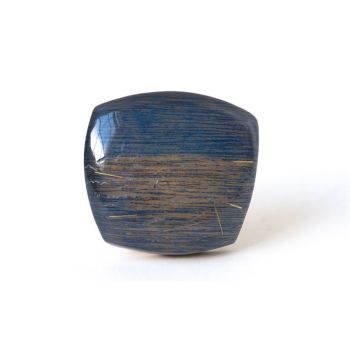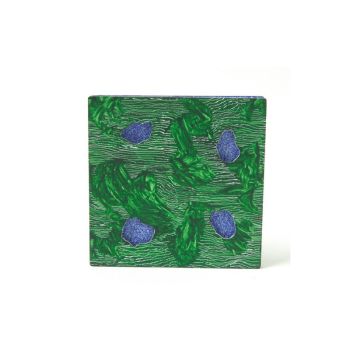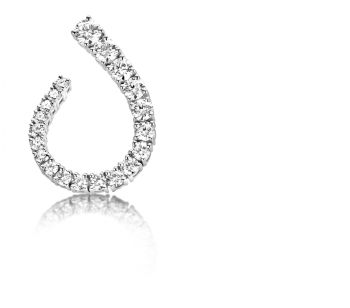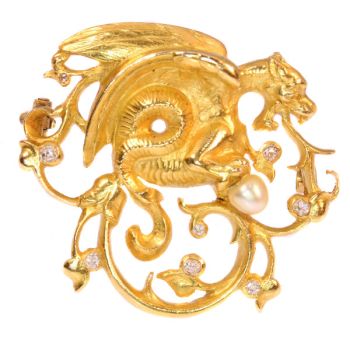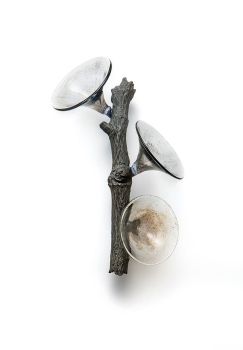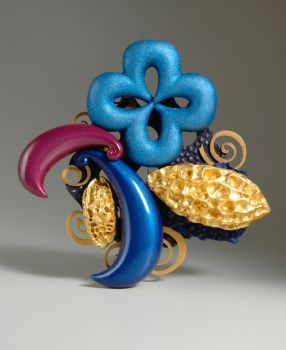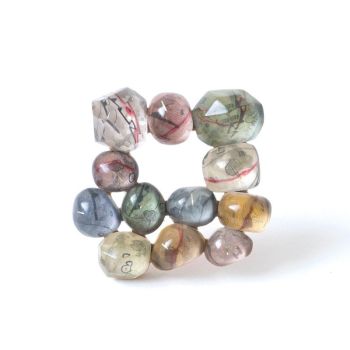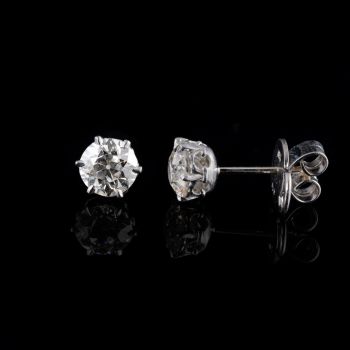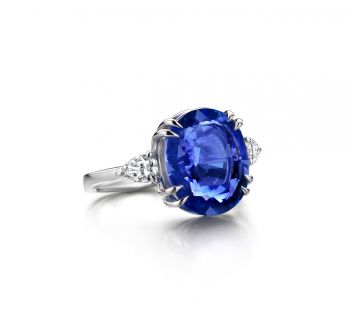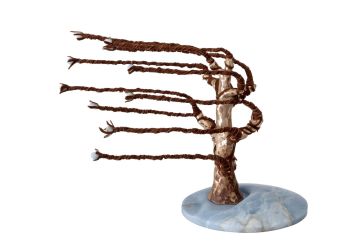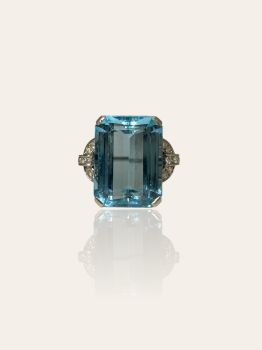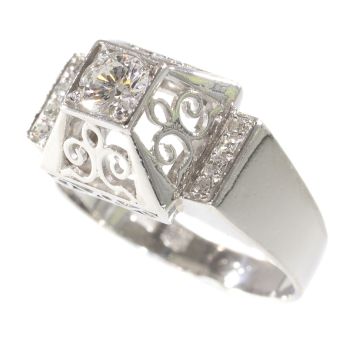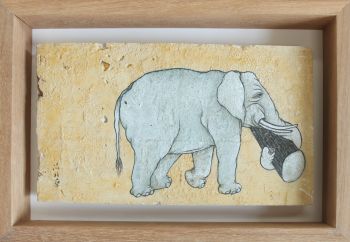Platine Art Déco serti de diamants émaillés Crest of the 4th Queen's Own Hussars 1920
Artiste Inconnu
Diamant brutGemmePlatine
€ 4.250
Adin Fine Antique Jewellery
- Sur l'oeuvre d'art
Antique jewelry object group: brooch
Condition: excellent condition
- (more info on our condition scale)
Country of origin:Although it does not carry any legible control marks we believe this to be of British origin.
Style: Art Deco - Art Deco is an eclectic artistic and design style which had its origins in Paris in the first decades of the 20th century. The style originated in the 1920s and continued to be employed until after World War II. The term "art deco" first sawwide use after an exhibition in 1966, referring to the 1925 Exposition Internationale des Arts Décoratifs et Industriels Modernes that was the culmination of high-end style modern in Paris. Led by the best designers in the decorative arts such asfashion, and interior design, Art Deco affected all areas of design throughout the 1920s and 1930s, including architecture and industrial design, as well as the visual arts such as painting, the graphic arts and film. At the time, this style was seen aselegant, glamorous, functional and modern.
- See also: Art Decoor more info on styles
Style specifics: Abstract motives and geometrical forms are quite typical for the Art Deco period. Art Deco moved away from the soft pastels and organic forms of its style predecessor, Art Nouveau, and embraced influences from many different styles and movements of the early 20th century, including Neoclassical, Constructivism, Cubism, Modernism, and Futurism. Its popularity peaked in Europe during the Roaring Twenties and continued strongly in the United States through the 1930s. Although many design movements havepolitical or philosophical roots or intentions, Art Deco was purely decorative.
Period: ca. 1920
- (events & facts of this era, poetry of this era, fashion of this era)
Source of inspiration: Militaria (military articles of historical interest, such as weapons, uniforms, and equipment)
Theme: Crest of the 4th Queen's Own Hussars
Material: platinum
- (more info on precious metals)
Technique: Enamelling is an old and widely-adopted technology. The ancient Egyptians applied enamels to pottery and stone objects. The ancient Greeks, Celts, Russians, and Chinese also used enameling processes on metal objects. Enamel is the colorful result offusing powdered glass to a substrate by firing, usually between 750 and 850 degrees Celsius. The powder melts and flows and hardens to a smooth, durable vitreous coating on metal, glass or ceramic. According to some sources, the word enamel comes fromthe High German word smelzan (to smelt) via the Old French esmail. Used as a noun, "an enamel" is a usually small decorative object, coated with enamel coating, such as a champlevé or a cloisonné (different techniques).
Extra information: The 4th Queen's Own Hussars was a cavalry regiment in the British Army, first raised in 1685. It saw service for three centuries, including the First World War and the Second World War. It amalgamated with the 8th King's Royal Irish Hussars, to form the Queen's Royal Irish Hussars in 1958.
The battle honours of the regiment were as follows:
Early Wars: Dettingen, Talavera, Albuhera, Salamanca, Vittoria, Toulouse, Peninsula, Ghuznee 1839, Afghanistan 1839, Alma, Balaklava, Inkerman, Sevastopol.
The Great War: Mons, Le Cateau, Retreat from Mons, Marne 1914, Aisne 1914, Messines 1914, Armentières 1914, Ypres 1914 '15, Langemarck 1914, Gheluvelt, St. Julien, Bellewaarde, Arras 1917, Scarpe 1917, Cambrai 1917, Somme 1918, Amiens, Hindenburg Line,Canal du Nord, Pursuit to Mons, France and Flanders 1914-18.
The Second World War: Gazala, Defence of Alamein Line, Ruweisat, Alam el Halfa, El Alamein, North Africa 1942, Coriano, San Clemente, Senio Pocket, Rimini Line, Conventello-Comacchio, Senio, Santerno Crossing, Argenta Gap, Italy 1944-45, Proasteion,Corinth Canal, Greece 1941.
Its last Regimental Colonel (between 1941 and 1958) was Sir Winston Churchill.
From: Wikipdia.
Diamond(s): 68 single brilliant cut diamonds (also called 8/8) with an estimated weight of ± 1.00ct.(colour and clarity: F/G, vvs/vs).
- All diamond weights, color grades and clarity are approximate since the stones were not removed from their mounts to preserve the integrity of the setting.
Birthstones: Diamond is the birthstone (or month stone) for April.
- (more info on birthstones)
Hallmarks: No trace.
- (more info on hallmarks)
Dimensions: height 3,07 cm (1,21 inch)
Weight: 4,70 gram (3,02 dwt)
Reference Nº: 17076-0179
Copyright photography: Adin, fine antique jewelry
platinum jewelry, jewelry with diamond, latest acquisitions,
antique jewelry, estate jewelry, vintage jewelry or modern jewelry
Jewelry with birthstones (or month stones) for:
January - February - March - April - May - June - July
August - September - October - November or December.
Additional information:
jewelry glossary - wall of fame - visit us in Antwerp - subscribe to our mailinglist.
What is antique jewelry? - What is estate jewelry? - What is vintage jewelry?
- Sur l'artiste
Il peut arriver qu'un artiste ou un créateur soit inconnu.
Certaines œuvres ne doivent pas être déterminées par qui elles sont faites ou elles sont faites par (un groupe d') artisans. Les exemples sont des statues de l'Antiquité, des meubles, des miroirs ou des signatures qui ne sont pas claires ou lisibles, mais aussi certaines œuvres ne sont pas signées du tout.
Vous pouvez également trouver la description suivante :
•"Attribué à …." A leur avis probablement une oeuvre de l'artiste, au moins en partie
•« Atelier de …. ou « Atelier de » À leur avis, une œuvre exécutée dans l'atelier ou l'atelier de l'artiste, éventuellement sous sa direction
•« Cercle de… ». A leur avis une oeuvre de la période de l'artiste témoignant de son influence, étroitement associée à l'artiste mais pas forcément son élève
•« Style de … ». ou "Suiveur de ...." Selon eux, une œuvre exécutée dans le style de l'artiste mais pas nécessairement par un élève ; peut être contemporain ou presque contemporain
•« Manière de… ». A leur avis une oeuvre dans le style de l'artiste mais d'une date plus tardive
•"Après …." A leur avis une copie (quelle qu'en soit la date) d'une oeuvre de l'artiste
•« Signé… », « Daté… ». ou « Inscrit » À leur avis, l'œuvre a été signée/datée/inscrite par l'artiste. L'ajout d'un point d'interrogation indique un élément de doute
• "Avec signature ….", "Avec date ….", "Avec inscription …." ou "Porte signature/date/inscription" à leur avis la signature/date/inscription a été ajoutée par quelqu'un d'autre que l'artiste
Êtes-vous intéressé par l'achat de cette oeuvre?
Artwork details
Related artworks
Artiste Inconnu
N.d. Murder of Johan and Cornelis de Witt in The Hague1672
€ 2.250Jongeling Numismatics & Ancient Art
 Sélectionné par
Sélectionné parDanny Bree
1 - 4 / 12- 1 - 4 / 24
- 1 - 4 / 24
Ans Hemke-Kuilboer
Clous d'oreilles diamant Solitair2000 - 2017
Prix sur demandeAns Hemke-Kuilboer Juwelier & Antiquair
Artiste Inconnu
A white jade ‘Lotus Seedpod and Bug’ carving, Qing dynasty, 18th century18th century
Prix sur demandeMenken Works of Art
1 - 4 / 24- 1 - 4 / 12

